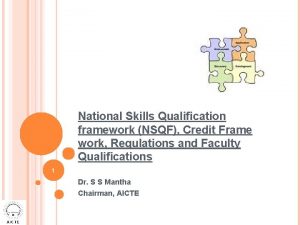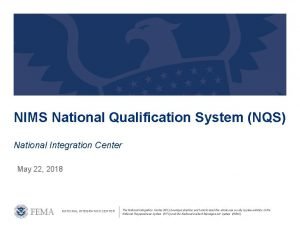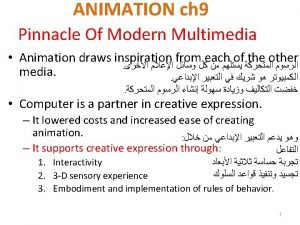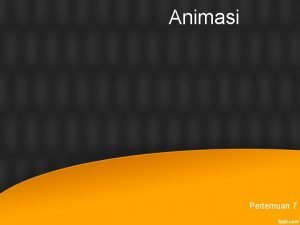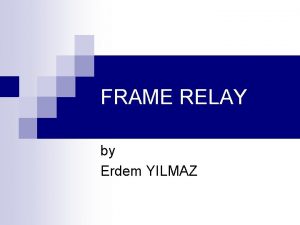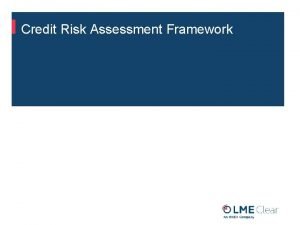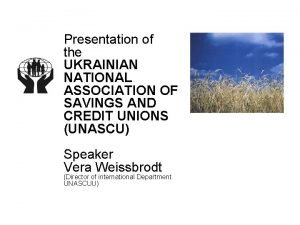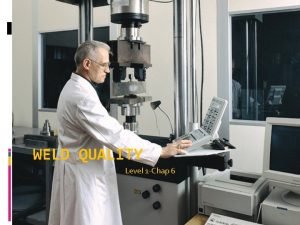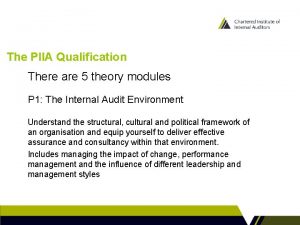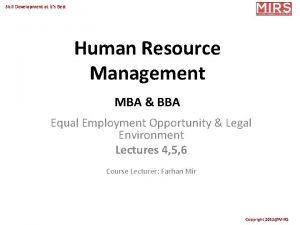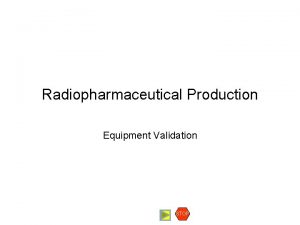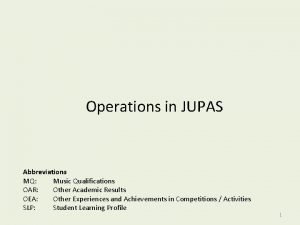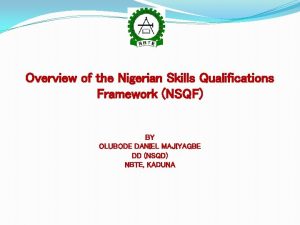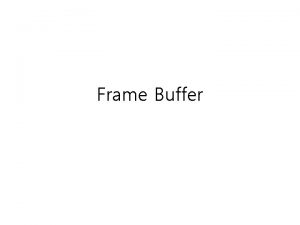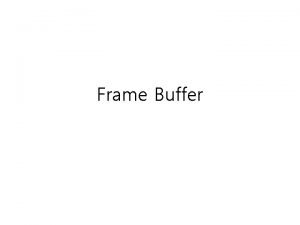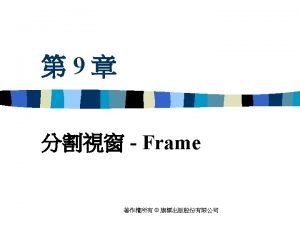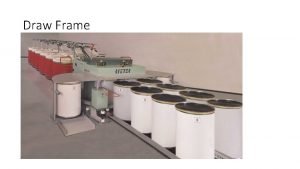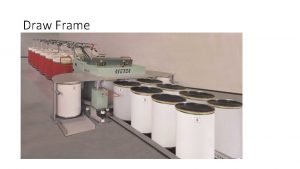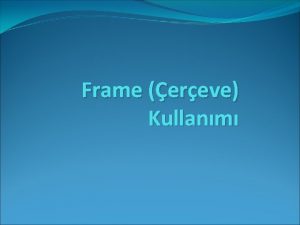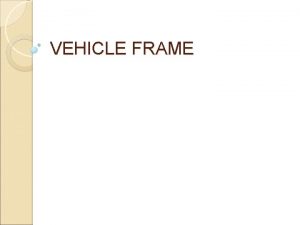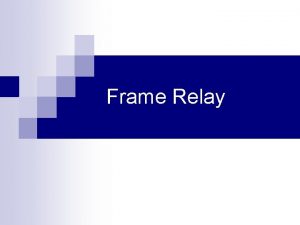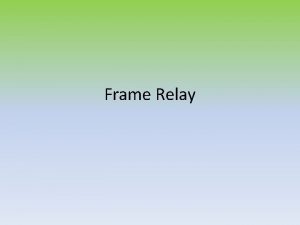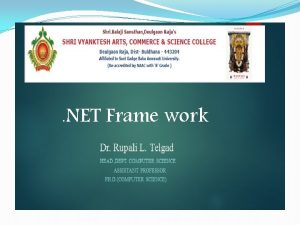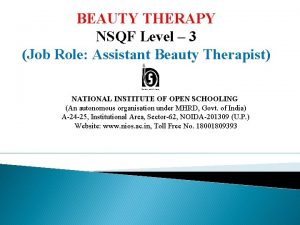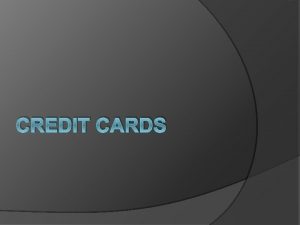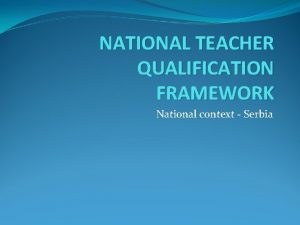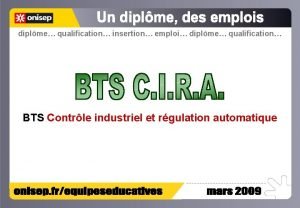National Skills Qualification framework NSQF Credit Frame work























- Slides: 23

National Skills Qualification framework (NSQF), Credit Frame work, Regulations and Faculty Qualifications 1 Dr. S S Mantha Chairman, AICTE

National Skills Qualification Framework (NSQF) NSQF launched to equip the students with skills and general education for multiple pathways into formal education, job market and Vocational Education streams 7 certificate levels to Diploma, Post diploma or Graduation in Vocational Education, starting 9 th Standard in school Bachelors in Vocational Education duly instituted Conduct NSQF skill Programs for the benefit of nearby communities and optimize resources as a part of community development started in Polytechnics and other colleges MOU signed with TISS for VE research and promotion MOU with UKIERI and AACC for promotion and collaboration Regulations and Approval Process for NSQF in place

Rationale for NSQF More than 20 Million drop out between X, XI and XII annually Mere Skills (ITI/ATI) not widely accepted in society Skills are terminal in nature Degree / Diploma do not guarantee Jobs Current cafeteria courses not very popular Current Education expensive Current Education operates only in structured environment

Vocational Education is Sector specific IT / ITES Adventure Sports Telecommunications Printing and Publishing Media and Entertainment Applied Arts Hospitality and Tourism Culture Construction Metallurgy Banking, Finance, Retail and Insurance Disaster Management / Fire Safety Infrastructure Manufacturing Automotive Paramedical Agriculture Many others – New and emerging 4

Architecture of NSQF (Provision to levels 8 -10 for Masters and Doctorate) 5

Credits / Year in a Typical Vocational Framework Certification Level Vocational in Hrs Formal I 200 800 III 350 650 IV 350 650 V 400 600 VI 450 550 VII 700 300 1000/1200 hrs/ year, 500/600 hrs/ semester Flexibility available +100 on each 6

Multiple Pathways 7

CREDIT FRAMEWORK The credit accumulation and transfer system is integrated in NSQF. This will allow people to move between education, vocational training and work at different stages in their lives according to their needs and convenience. It will be possible for a student to leave education domain, get some practical experience in industry and return to studies to gain qualifications to progress higher in his/her chosen career Credit Accumulation, mobility, Credit transfers, Recognition of Prior Learning, Quality assurance and sharing of resources is are all important

WHAT IS A CREDIT Credit hours or units represent a mathematical summarization of all work completed, and are not the same as the actual classroom contact or instructional hours. Credit formulae are used to record all types of academic work, and not just taught courses. Hence credits typically include independent research, assignments, tutorial work or any other academic work Credits are a convenient numerical way to assess mobility parameters, besides helping in assessing fee to be charged and determine student status. Registered student status is usually defined as being enrolled in a given semester or quarter for a specified minimum number of credit hours, which are assigned for any type of study recognized and required by the faculty. Tuition charges are usually calculated by the instructional cost per credit hour.

Conversion of Learning Hrs to Credits Framework - I Complete vertical and lateral mobility Every level results in a skill certification by the trainer and a level certification by the School / College / Board / University as the case may be. Every level or certification is approximately 1000 Hrs / annum Every level or certification is a combination of Skill Hrs and Education Hrs. The Education content at levels I, III, IV is as per the CBSC Content All Vocational Skill Content is sector specific Skills acquired at each higher subsequent level are added on skills on the earlier level skills and are treated as higher order skills than the level of skills acquired at the earlier level. Vocational Skill Sectors are grouped under either Science, Arts, or Commerce streams The Education content at Level V, VI, and VII is modeled on the common content as prevalent in various Universities for Science, Arts, or Commerce streams

Conversion of Learning Hrs to Credits Framework - II Multi point entry and exit between vocational education and conventional system of education and job markets Recognition of prior learning A new degree programs as B. Voc (Bachelor in Vocational Education) has been Instituted by UGC A new Diploma Program as Diploma in Vocational Education is to be instituted by the Board of Technical Education in all States A new Community Skill Diploma (CSD) where only skills and basic education are imparted is to be instituted by the Board of Technical Education in all States Issues pertaining to credit allocation, acceptance, accumulation, transfer, and professional mobility are in place

Credits based on engagements per week and 28 - 30 weeks in a year One Hr. Theory for education component in a class room is equivalent to 1 credit Two Practical Hrs for education component in a laboratory is equivalent to 1 credit Three Skill Hrs at a trainers workshop / facility at level one is equivalent to 1 credit One and half Skill Hrs at a trainers workshop / facility at level seven is equivalent to 1 credit Credits vary between level one and seven in a linear fashion to take care of the higher order of skills About 135 - 150 credits will ensure the award of a Diploma in Vocational education after level II About 135 - 150 credits will ensure the award of a Degree in Vocational education after level IV

Skill (Credits/Hrs) – Levels of Certification

A typical Credit Framework

Never gone to School / College ? 15

Never gone to School / College ? 16

Community Colleges Any college / Polytechnic that conducts Vocational Education programs under NSQF will be termed a Community College for that period No new brick and Mortar Institutions Existing Polytechnics and Engineering Colleges to be used NSQF is the frame work: Community college is the vehicle Interface with the Boards of Technical Education and the Universities for the award of Diploma and Degree Skills to be imparted by the Industry or its associates Community Skill Diploma by the BTE Flexible times Credit and Module based

Current Status AICTE has approved about 450 Polytechnics and Engineering Colleges to conduct Programs under NSQF AICTE has funded 72 Polytechnics under NSQF 16 Sectors and 80 specialisations content available at www. aicte-india. org > education > vocational education in both skills and education in all seven sectors and created by industry experts Framework provides multiple exit and entry to and from Formal, vocational education and job markets AICTE has now mandated 8000 /12000 colleges to conduct at least one division in NSQF in a chosen sector / specialisation from 2014 – 2015 Online registration of Institutions and Skill trainers MOU with ILFS, UKIERI, AACC, NIELIT and TISS

Faculty for Skills Vocationalisation of Higher Education has two Components Of paramount importance is that Skills and Education are to be imparted together Education and Skills Faculty required for catering to Education needs will continue to be defined by the requirements as enumerated by various regulators Imparting Skills and its assessment through trainers requires that the trainers have requisite qualifications, experience, competencies and certifications

Qualifications, experience and Competencies Level Certifying Body Qualifications Experience Competency 1, 2 School XII / ITI 2 Years hands on Sector specific competency of next higher level 3, 4 School XII / ITI 4 Years hands on -do- 3, 4, 5 BTE Graduate / 3 years Diploma preferably in relevant field 4 Years hands on -do-

Qualifications, experience and Competencies Level Certifying Body Qualifications Experience Competency 6, 7 BTE Graduate / 3 years 5 Years Diploma preferably hands on in relevant field Sector specific competency of next higher level 5, 6, 7 University Graduate / 3 years 5 Years Diploma preferably hands on in relevant field Sector specific competency of next higher level

Qualifications, experience and Competencies Level Certifying Body Qualifications Experience Competency 8, 9 University Graduate preferably in relevant field 7 Years hands on Sector specific competency All competencies are to be specified by certified trainer and assessed by SSC or appropriate professional bodies. Hence it is essential to design and develop appropriate trainers module

Thank You Until WE meet next 2 3
 Credit frame
Credit frame National qualification framework
National qualification framework Nims integration center
Nims integration center Frame by frame animation programs
Frame by frame animation programs Pengertian animasi frame by frame
Pengertian animasi frame by frame Risanuri hidayat
Risanuri hidayat Frame relay frame format
Frame relay frame format This can be avoided by giving credit where credit is due.
This can be avoided by giving credit where credit is due. Credit union enterprise risk management
Credit union enterprise risk management Credit risk management framework
Credit risk management framework Equifax national consumer credit trends report
Equifax national consumer credit trends report Ukrainian national association
Ukrainian national association National federation of community development credit unions
National federation of community development credit unions 5f welding position
5f welding position V model qualification
V model qualification Piia qualification
Piia qualification Tqfe qualification
Tqfe qualification Adit registration
Adit registration Bona fide occupational qualification
Bona fide occupational qualification Equipment validation definition
Equipment validation definition Ano ang kapangyarihan ng tagapaghukom
Ano ang kapangyarihan ng tagapaghukom Jupas music qualification
Jupas music qualification Pn
Pn Soldiers creed
Soldiers creed
